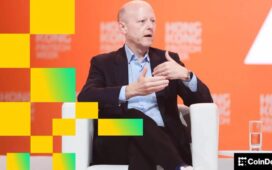By Abiola OLATOYE
Africa is the second-largest continent and has abundant natural resources, including oil, gas, and minerals. These resources continue to serve as a significant source of income for many African countries. All of these continue to attract foreign investment, with potential for sustained economic expansion, industrial diversification, and capital market development.
There has been a long-standing dependence on extractive industries, but a growing shift is underway towards digital infrastructure, manufacturing, renewable energy, and social infrastructure, which is reshaping Africa’s investment profile. This shift towards value-added production and technology-driven sectors opens new avenues for investors to participate in long-term equity projects.
As African economies continue to diversify and integrate, their equity markets are progressing beyond frontier status to become strategic platforms for mobilizing long-term investment and driving inclusive economic growth.
Nevertheless, maximizing this opportunity requires a nuanced understanding of the opportunities and challenges shaping these markets. Some of the key challenges include limited market liquidity, currency volatility, currency mismatch, and regulatory fragmentation, which often deter large-scale institutional involvement.
In addition, political instability, inconsistent policy environments, weak corporate governance practices, and low levels of financial literacy continue to constrain investor confidence and market depth. Infrastructural deficiencies, particularly in trading technology and settlement systems, further limit cross-border participation and efficiency.
Addressing these constraints through stronger regulation, enhanced transparency, and regional market integration will be critical to unlocking the full potential of Africa’s capital markets and positioning them as credible engines of sustainable growth.
Of all the challenges confronting Africa’s financial markets, currency mismatch stands out as one of the most consequential. Despite improving market fundamentals, many firms and governments continue to borrow in foreign currencies (typically U.S. dollars or euros) while earning revenues in local currencies. This gap leaves balance sheets vulnerable when exchange rates fluctuate. As global investors seek to expand their exposure to African markets, addressing this structural mismatch has become crucial to achieving sustainable and risk-adjusted returns.
According to the African Development Bank (AfDB), the infrastructure financing gap lies between US$130 billion and US$170 billion annually, and it is imperative to bridge this shortfall. This is essential for unlocking productivity, job creation, and economic resilience across the continent. It also advances the continent’s progress toward achieving the Sustainable Development Goals (SDGs).
Currency mismatch inflates the cost of capital, distorts service pricing, and deters long-term investment across key sectors, including energy, transportation, and healthcare. While this challenge is not unique to Africa, its impact is amplified by the continent’s macroeconomic volatility, shallow local-currency capital markets, and limited availability of hedging instruments.
According to studies by the Climate Policy Initiative (2024) and the International Finance Corporation (2024), many sustainable infrastructure projects in emerging markets face an additional 200 – 600 basis points in borrowing costs due to foreign exchange risk driven by volatility and uncertainty, thereby rendering otherwise viable investments financially unbackable.
The effects are most pronounced in long-tenor sectors such as energy and healthcare, where project revenues materialize over decades and are highly sensitive to exchange-rate fluctuations. Consequently, even as global investors hold record volumes of liquidity seeking yield, African infrastructure projects often remain underfunded because their financing structures expose them to unsustainable currency risk.
Overall, this structural imbalance poses a significant macroeconomic concern, as foreign-currency lending accounts for an estimated 70–85percent of total debt in low-income countries, heightening vulnerability to external shocks and debt-servicing pressures. Typically, infrastructure projects such as renewable energy plants, toll roads, and hospitals generate income in local currency through user fees or government payments.
However, their debt obligations are frequently denominated in foreign currency. When exchange rates depreciate, the cost of debt in local currency terms rises sharply, threatening the profitability and long-term viability of projects. Thus, it is common for project financiers to embed a systemic risk premium and demand higher returns to compensate for foreign-exchange risks. This, in the long run, increases the weighted average cost of capital (WACC) and, ultimately, the cost of service delivery.
Several initiatives have provided local-currency hedging solutions for development finance institutions (DFIs) to mitigate currency mismatches, including the Currency Exchange Fund (TCX), the IFC’s Local Currency Facility, and the AfDB’s African Domestic Bond Fund. Additionally, the African Unit of Account (AUA) and the Pan-African Payment and Settlement System (PAPSS) have proposed facilitating regional settlements and reducing dollar dependency.
Despite all these initiatives, the currency gap remains as hedging instruments are largely expensive and illiquid with short tenors. Additionally, the market has limited access to a small subset of currencies, resulting in partial coverage most of the time, which creates a lingering constraint on sustainable infrastructure investment for many African governments and private sponsors.
The extent of mismatch and its impact on the cost of capital have been widely studied with comparatively little work done on integrated, actionable solutions that combine financial innovation, policy reform, and institutional coordination. However, African economies need to shift from viewing foreign exchange risk as an unavoidable feature to approaching it as a design flaw that can be mitigated through structured financial and policy interventions.
It would be beneficial to integrate a coordinated ecosystem approach using blended finance, local-currency debt issuance, and risk-sharing partnerships between DFIs and private investors.
A combination of local-currency financing mechanisms, longer-tenor hedging products, foreign exchange-indexed revenue frameworks, and supportive policy reforms would significantly reduce the WACC for infrastructure projects. Once financing costs are reduced, there will be a corresponding effect on affordability and access, as tariffs, tolls, and fees will also be reduced.
To illustrate this argument, a 300–500 basis-point reduction in financing cost, for instance, can improve project internal rates of return by up to 20 percent and reduce required user tariffs by similar margins, expanding service access without additional subsidies.
Therefore, shifting the paradigm from identifying risks to designing solutions would ensure that mitigating currency mismatch is not merely a financial optimization exercise but a development imperative. Reducing foreign exchange exposure and lowering the cost of capital are central to unlocking the private investment required to achieve Africa’s infrastructure and sustainability goals.
>>>The writer is a project finance and investment professional with experience spanning venture capital, financial advisory, private equity, and investment management. He has held key roles across Nigeria’s financial services industry, including at a financial advisory firm, a private equity firm, and the Nigerian Sovereign Investment Authority, where he contributed to strategic investment initiatives across multiple sectors. Now based in the United States, Abiola works in venture capital, focusing on early-stage investments that drive innovation and economic growth. He is currently pursuing his MBA at the University of Michigan Ross School of Business. He holds a master’s degree in finance and a bachelor’s degree in Economics. He can be reached via [email protected]
Post Views: 40
Discover more from The Business & Financial Times
Subscribe to get the latest posts sent to your email.




